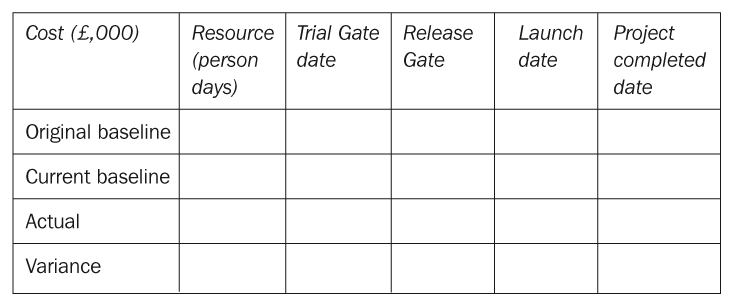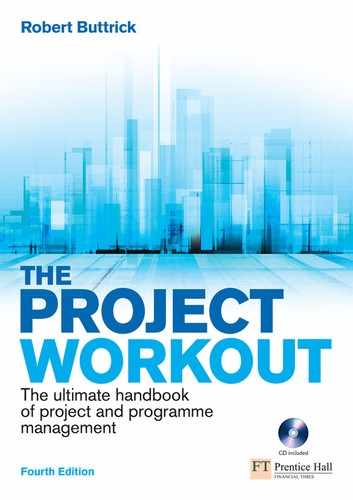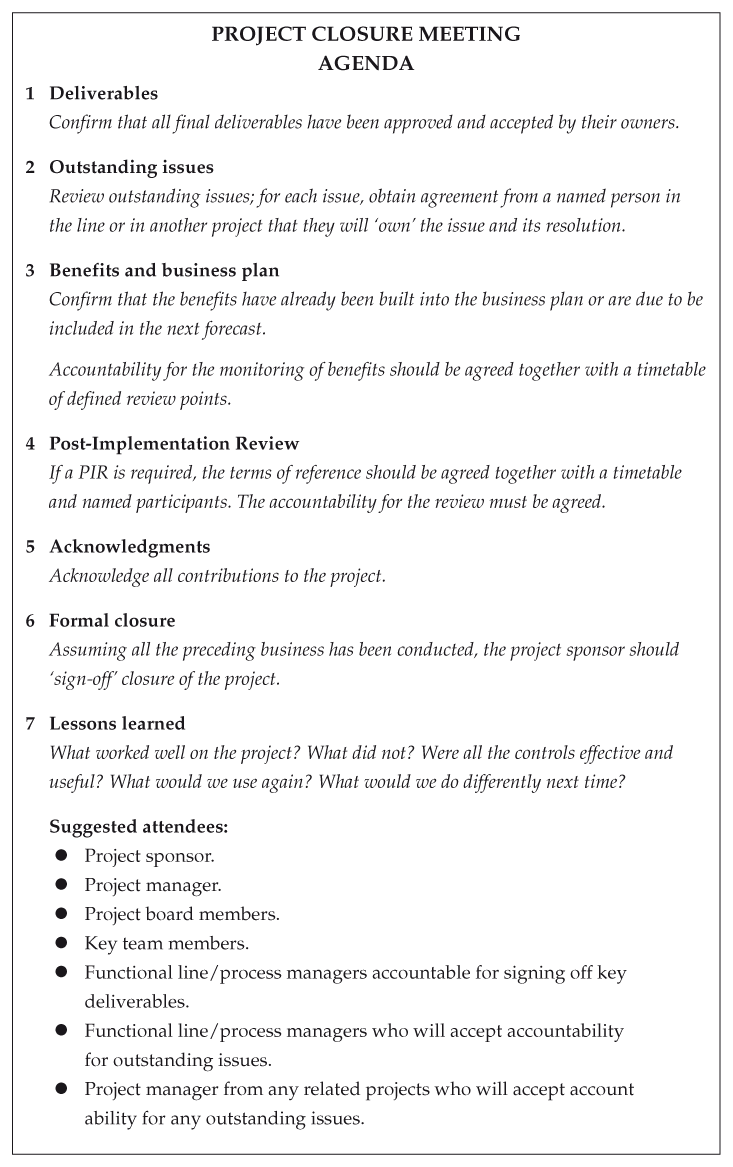Closing the Project
It is the project sponsor’s role to approve the closure of a project. However, if a project is to be closed part way through and other projects are affected (the project definition will define interproject interdependencies), approval may need to be given by a higher authority or agreed with other affected parties.
‘Yes, in the old days that was so, but we have changed all that.’
MOLIÈRE 1622–1673

- Closure is the project sponsor’s decision.
- Check interdependent projects before terminating yours.
- Make project closure explicit.
- Communicate closure to the stakeholders.
- Learn the lessons and share them.
Project closure
The objective of project closure is to ensure that:
- a project is closed down in a controlled and organised way;
- all accountabilities relating to it have been discharged or handed over to the line or to another project.
Closure is the formal ‘end-point’ of a project: this is either because it is completed or because it has been terminated. Termination may occur because the project is no longer viable or because the risks associated with it have become unacceptably high. The closure review should:
- review the efficiency of the project in terms of meeting the original time, cost and scope;
- confirm that the benefits have been built into the business forecast;
- record and communicate any lessons which can be beneficial to future projects.
As far as the project sponsor is concerned, either the project has been completed and he/she can now expect to benefit from it, or the project has been terminated. In the latter case, this may be because the original business need no longer exists, but, if it does, the project sponsor will need to take action to address the unresolved business need which initiated the project in the first place.
There are three key steps to closing a project:
- Prepare the closure report.
- Formally close the project.
- Close down and communicate.
The closure report
It is the project sponsor’s role to approve the closure of a project. However, if a project is to be closed part way through and other projects are affected (the project definition will define any project interdependencies) approval may need to be given by a higher authority or agreed with other affected parties.
When a project is to be closed, you, as project manager, should:
- Check the status and completeness of the Business Case (including the project definition), the change and issues logs, the most recent progress report and any papers referring to early cancellation of project. (Do this using Project Workout 27.1.)
- Prepare a draft project closure report with the team, including the terms of reference for the Post-Implementation Review (PIR).
The purpose of the closure report is to record the reason for closure, the benefits the project is expected to achieve and any outstanding accountabilities which need to be handed over. It also documents any lessons learned regarding how the project was conducted and the efficacy of the supporting processes.
The project closure report should include the following sections:
- Business objectives.
- Closure statement.
- Benefits measurement.
- Outstanding issues and deliverables.
- Project efficiency.
- Lessons learned.
- Acknowledgments.
An appendix should give the terms of reference for the Post-Implementation Review, if one is required.
Contents of a project closure report
1 Business objectives
Restate the business objectives as given in the Business Case, including any changes that have been approved since it was authorised (see p. 298). If there have been any major changes, state the reasons.
State the circumstances under which the project is being closed as one of the following:
- the project has been successfully completed;
- the project has been terminated prior to completion.
If the latter is the case, describe the reasons for termination and indicate the current likelihood of resurrection.
3 Benefits measurement
Restate the tangible benefits (given in the Business Case; see p. 298) which the project will provide and how these will be measured, together with who will be accountable for measuring them. In addition:
- state whether the current business plan/forecast reflects the project benefits;
- include defined review points for measurements of benefits.
4 Outstanding risks, issues and deliverables
List any issues or key deliverables not yet accepted. For each give:
- the nature of the risk and/or issue or reason for non-acceptance;
- who has agreed to be accountable;
- the proposed resolution (including date).
5 Project efficiency
State the actual cost and resources consumed as well as the actual schedule achieved compared with the plan.

Referring to project efficiency and the project team’s experiences, (e.g. major issues encountered, changes of strategy) state what could have been done better:
- Identify areas where time, money, or resource could have been better used.
- Recommend courses of action for future projects to help eliminate any inefficiencies found.
- Identify what worked well and recommend methods, processes, procedures and tools which other projects may find of use in the future.
7 Acknowledgments
Acknowledge all individuals who have made special contributions to the project.
Appendix A: terms of reference for PIR
The Post-Implementation Review (PIR) is designed to measure the benefits realised by the project against the conditions of satisfaction given in the Business Case (see also p. 298).
If a Post-Implementation Review is required, state:
- who is accountable for organising and chairing it;
- when it will occur;
- which functional areas and stakeholders are required to participate.
The closure meeting
You should invite key individuals to a meeting at which the project is formally approved for closure by the project sponsor. By drawing the group together, the project manager has an opportunity to:
- ensure feedback reflects the differing viewpoints of those involved;
- assign accountabilities for outstanding issues;
- acknowledge the team and celebrate.
The quality and sharing of feedback is always greater when done in a group than when conducted in isolation.
A suggested agenda for a closure meeting follows and is detailed in Figure 27.1:
- Deliverables.
- Outstanding issues.
- Benefits and business plan.
- Post-Implementation Review.
- Acknowledgments.
- Formal closure.
- Lessons learned.
The draft project closure report, which should be circulated prior to the meeting, provides the briefing for the attendees. This will be amended based on the discussions and feedback received at the meeting.
Small projects
If the project is small or if the project sponsor and project manager do not believe a meeting will add value, formal closure should be agreed by the project sponsor after a review of the closure report by the relevant individuals.
Large projects
It may be advisable to hold two meetings for large projects; the first to cover items 1 to 6 and the second to cover item 7. This is particularly of value when it is known that the project can contribute greatly to the organisation’s corporate learning.
Closure actions
Following approval to close the project from the project sponsor, the project manager should:
- finalise the project closure report;
- prepare a communication, enclosing the approved project closure report to the project sponsor, project team and stakeholders, confirming the decision to close the project;
- complete any outstanding closure actions;
- feed back any suggested process improvements to the relevant project offices and/or process support group.
A full checklist is included in Project Workout 27.1.
WHAT HAPPENS TO THE LESSONS?

Collecting the lessons learnt from each project and focusing on them at project closure will ensure those involved in the project are less likely to fall into the same traps twice. It will not, however, ensure no one else does! If your organisation as a whole is to benefit, you need to be able to make these lessons more widely available. In large organisations this can be problematic as the volume of information can be daunting. Don’t fall into the trap of just listing each lesson in a long document; no one will find anything. You must invest some time in making the lessons accessible and relevant. Think of a cookery book. It is not merely a set of recipes that the author has cooked over the past year. It is carefully divided up and indexed to make it as easy as possible for the reader to find what is needed. Your lessons learnt should be the same. Intranet capabilities are invaluable in helping you distribute the lessons.

27.1 CLOSURE CHECKLIST


